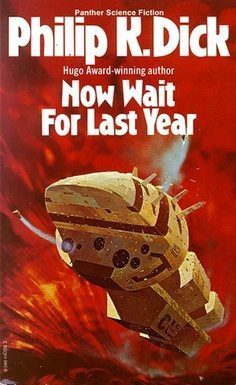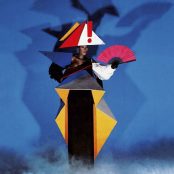[dropcap style=”font-size:100px; color:#992211;”]T[/dropcap]he Man in the High Castle, first published in 1962, is the novel different from Phil’s pen.
He handles the alternate earth theme (Nazis and Japanese win World War 2 and share the proceeds) with curious restraint. All of his bizarre events and quirky characters are in place but held in check by a tight plot and a calm oriental eye. He used the Chinese oracle I Ching not only to write the book but also as a plot device inside the pages.
Working with an editor he trusted, Pete Israel, Phil made substantial changes to the first draft with no great expectations for its commercial success. But, for the first and only time in his career, persistence and daring paid off.
He was in exactly the right place at the right time.
The Man in the High Castle was issued in hardcover by Putnam, marketed as a mainstream novel, and yet immediately embraced by the Science Fiction Book Club of America. It was they, not Putnam, who submitted it for the prestigious Hugo award and, much to everyone’s surprise, it won in the Best Novel category.
Nowadays such an event for an author would lead to a media power surge with a well-orchestrated campaign to make such conferred status the firm foundation for a long and prosperous career.
[quote]Recurring themes
and devices were
used as modular
blocks to tell
haunting dissonant
tales[/quote]
But this was 1963 and the mechanics for this type of spin cycle were not yet in place, except in Phil’s head, where the future and the past existed simultaneously. Lifted out of depression by this unexpected victory he tried on the fragile wings of hubris and grandiosely prepared himself for the life of a serious author.
His next novel Martian Time Slip (a fine work but a lousy commercial follow up to The Man in the High Castle) was rejected by Putnam and finally slipped out in paperback two years later to a muted response.
Despite this setback his fiction began to blossom as a strange wild flower during the nineteen-sixties. Although his Hugo failed to secure him mainstream status it did mean that, as long as Phil was prepared to churn out novels at hack pace, low rent publishers of science fiction paperbacks (such as ACE) would publish them for a small but loyal readership.

And out they came like a Kamsin wind from the desert carrying strange intellectual pestilence.
Recurring themes and devices were used as modular blocks to tell haunting dissonant tales populated by pseudo-intelligent flying cars, domestic pets with souls, insane charismatic leaders ruling independent states through technology, simulated life forms capable of passing as human, communicable mental illness, the notion of evil as a living being, Gnosticism, false memories, decay and entropy at war with empathy and caritas, savage political in-fighting and a never-ending supply of small-scale sweaty capitalists scraping an existence at the bottom of the heap.
There were brain crunching titles such as: The Game Players of Titan, The Penultimate Truth, Clans of the Alphane Moon, The Three Stigmata of Palmer Eldritch, Dr. Bloodmoney, Now Wait for Last Year, Do Androids Dream of Electric Sheep?, UBIK and The Galactic Pot Healer. In that decade alone, even though almost a year was lost to ‘writer’s block’ (more likely fatigue), Phil wrote nineteen published novels as well as short stories and several unfinished novels, including an aborted sequel to The Man in the High Castle.
The work was staggering in its intensity and much of it, Phil claimed, was written under the influence of amphetamine. Whatever the truth of that it certainly found a new audience of potheads, tripsters and scene makers who had no doubt that, when it came to psychedelic science fiction, Phil was the man.
The force built up by this incredible outpouring of damaged inner space was building enough traction to propel him into the darker territories of the grim and gritty seventies. When the high flying dreams of the sixties subculture collapsed into disco and glam rock, Phil was already there, dreaming in the rubble.
TO BE CONTINUED
Read on: Part 1 | Part 2 | Part 3 | Part 4 | Part 5 | Part 6

Having completed principal photography on phase one of the Sharks revival SWP is now preparing to edit the One Last Thrill feature documentary. Sharks themselves are ‘dropping a big one’ by releasing a double album Dark Beatles/White Temptations in April 2018.
In his spare time the author kayaks the muddy river Ouse and walks the South Downs which gently enfold his home town of Lewes.




















